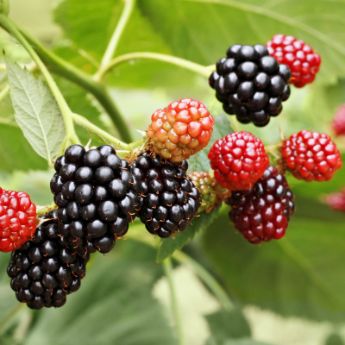Thornless Blackberries
Thornless Blackberries Buyer's Guide
Sweet Flavor Without the Scratches
Homegrown blackberries are famous for their bold, sweet flavor—but thorny canes used to be the price you paid. Thankfully, modern thornless blackberry plants offer the same delicious fruit without the hassle. No gloves, no long sleeves—just fresh berries you can pick comfortably with the whole family.
Whether you’re planting along a fence line, trellising them in rows, or building a backyard berry patch, thornless blackberries are a low-maintenance, high-yield addition to any edible landscape.
Why Grow Thornless Blackberries?
- No thorns means easier, safer harvesting
- High yields of juicy, flavorful berries
- Great for fresh eating, baking, and preserving
- Attractive plants double as edible hedges or trellis crops
- Easier care and better disease resistance than wild types
What to Know Before You Buy
Zone Compatibility
All of our thornless blackberry varieties thrive in USDA Zones 4–10. Be sure to check the product page for variety-specific guidance.
Pollination
These plants are self-pollinating, so you only need one to get fruit—but planting more can increase yield and extend your harvest.
Spacing & Support
For best results, space plants 3–5 feet apart and grow them with trellis or fence support. Prune yearly to maintain shape and encourage new growth.
Learn more about trellising blackberry plants »
Tips for Growing Success
- Sunlight: Full sun (6–8 hours/day)
- Soil: Well-drained, slightly acidic
- Water: Consistent moisture during fruiting
- Pruning: Remove old canes after harvest and manage new growth early in spring
- Winter Care: Mulch roots in colder zones for protection
Harvesting Made Easy
Thornless blackberries ripen in mid to late summer, depending on the variety. Berries are ready when they’re:
- Fully black and glossy
- Plump and slightly soft
- Easy to pull from the cane
Frequent picking encourages continued production and reduces the chance of overripe fruit attracting pests.
Browse our full selection of thornless blackberry plants to find your new favorite—no thorns required.

